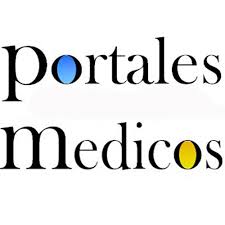Cervicometria en el primer trimestre como predictor de parto prematuro espontáneo
Cervycometry in the first trimester as a predictor of spontaneous premature delivery
Resumen
RESUMEN
El parto prematuro es una complicación frecuente que genera alta morbilidad y mortalidad neonatal, siendo un problema de salud pública global. Este estudio tiene como objetivo analizar la efectividad de la cervicometría en el primer trimestre como predictor de parto prematuro espontáneo en pacientes del Hospital Universitario de Caracas. Se llevó a cabo un estudio cuantitativo, analítico y de cohorte prospectiva, con una muestra de 152 gestantes entre 11 y 14 semanas de gestación. Se midió la longitud cervical en dos momentos: en el primer trimestre y nuevamente entre las 18 y 24 semanas. Los resultados mostraron que una longitud cervical ≤ 29 mm en el primer trimestre tenía una sensibilidad del 98.65% y una especificidad del 75%, indicando una alta efectividad para identificar embarazos en riesgo de parto prematuro. Además, se observó una correlación significativa entre las longitudes cervicales medidas en ambos trimestres. Las conclusiones destacan que la cervicometría es una herramienta confiable para predecir el parto prematuro y que su uso en el primer trimestre puede facilitar intervenciones tempranas, como la administración de progesterona o cerclaje cervical, contribuyendo así a reducir la morbilidad y mortalidad neonatal.
ABSTRACT
Preterm birth is a common complication that leads to high neonatal morbidity and mortality, representing a global public health issue. This study aims to analyze the effectiveness of cervical length measurement in the first trimester as a predictor of spontaneous preterm birth in patients at the University Hospital of Caracas. A quantitative, analytical, and prospective cohort study was conducted with a sample of 152 pregnant women between 11 and 14 weeks of gestation. Cervical length was measured at two points: in the first trimester and again between 18 and 24 weeks. The results showed that a cervical length ≤ 29 mm in the first trimester had a sensitivity of 98.65% and a specificity of 75%, indicating high effectiveness in identifying pregnancies at risk of preterm birth. Additionally, a significant correlation was observed between the cervical lengths measured in both trimesters. The conclusions highlight that cervical length measurement is a reliable tool for predicting preterm birth, and its use in the first trimester may facilitate early interventions, such as the administration of progesterone or cervical cerclage, thereby contributing to the reduction of neonatal morbidity and mortality.
Recibido: 31-05-2025
Aceptado: 28-07-2025
Publicado: 17-11-2025
Palabras clave
Texto completo:
PDFReferencias
Baños, N., Murillo, C., Julià, C., Migliorelli, F., Perez, A., Ríos, J., Gratacós, E., Valentin, L. y Palacio, M. (2018). Mid-trimester sonographic cervical consistency index to predict spon-taneous preterm birth in a low-risk population. Ultrasound in Obstetrics & Gynecology, 51, 629-636.
Betancourt, D. E. (2021). Evaluación ecográfica de la longitud del cuello uterino como predictor del parto pretérmino y factores de riesgo en pacientes atendidas con amenaza de parto pretérmino en el servicio de ARO del Nuevo Hospital Monte España, del 1 de junio 2017 a 18 de diciembre del 2020 [Trabajo de grado, Universidad Nacional Autónoma de Nicara-gua]. https://repositorio.unan.edu.ni/16476/1/16476.pdf.
Cáceres, A. L., y Guaypacha, S. P. (2020). Cervicometría como factor predictivo de amenaza de parto pretérmino [Tesis de grado, Universidad Nacional de Chimborazo]. http://dspace.unach.edu.ec/bitstream/51000/6804
Cairo, V. M., Jiménez, S., Machado, H. L., Marín, Y., Cardet, Y., & Ocenes, R. (2021). Factores de riesgo y características de la cervicometría en pacientes con parto pretérmino. Acta Médica Centro, 15(4),531-541. http://scielo.sld.cu/scielo.php?script=sci_arttext&pid=S2709-79272021000400531&lng=es.
Castillo, E., Espinola, M. A., Sanca, S. N., Ayala, F., y Mascaro, P. (2020). Cervicometría menor o igual a 30 mm como predictor de parto pretérmino en mujeres embarazadas peruanas. Medisur, 18(1), 96–103. http://scielo.sld.cu/scielo.php?script=sci_arttext&pid=S1727-897X2020000100096
Cheung, K. W., Au, T. S.-T., Li, J., & Seto, M. T. (2024). First-trimester and early-second-trimester transvaginal cervical length before 16 weeks among women with preterm and term birth: a systematic review and meta-analysis. American Journal of Obstetrics & Gynecology MFM, 6(5S), 101282. https://doi.org/10.1016/j.ajogmf.2024.101282
Feltovich, H., y Hall, T. (2013). Quantitative imaging of the cervix: setting the bar. Ultrasound in Obstetrics & Gynecology, 14, 121.
Feng, Q., Chaemsaithong, P., Duan, H., Ju, X., Appiah, K., Shen, L., Wang, X., Tai, Y., Leung, T. Y., & Poon, L. C. (2022). Screening for spontaneous preterm birth by cervical length and shear-wave elastography in the first trimester of pregnancy. American Journal of Obstetrics and Gynecology, 227(3), 500.e1-500.e14. https://doi.org/10.1016/j.ajog.2022.04.014
Fichera, A., Pagani, G., Stagnati, V., Cascella, S., Faiola, S., Gaini, C., Lanna, M., Pasquini, L., Raffaelli, R., Stampalija, T., & Prefumo, F. (2018). Cervical-length measurement in mid-gestation to predict spontaneous preterm birth in asymptomatic triplet pregnancy. Ul-trasound in Obstetrics & Gynecology, 51, 614–620.
Flores, X., Rojas, F., Zapata, N., Tiznado, F., & Hinrichs, C. (2019). Longitud cervical en la pre-dicción de parto prematuro espontáneo y resultados perinatales en población de gemelos (dobles) en Hospital Provincial, Chile. Revista Chilena de Obstetricia y Ginecología, 84(5), 355-361. https://www.scielo.cl/scielo.php?script=sci_arttext&pid=S0717-75262019000500355
Godoy, P. C. (2023). Medición ultrasonográfica de la longitud cervical entre 16 a 24 semanas de gestación como predictor de parto pretérmino espontáneo en una población de mujeres la-tinas asintomáticas [Tesis doctoral, Universidad Autónoma de Bucaramanga]. https://repository.unab.edu.co/bitstream/handle/20.500.12749/20148/2023_Tesis_Paula_Camila_Godoy.pdf
Greco, E., Gupta, R., Syngelaki, A., Poon, L., & Nicolaides, K. (2012). First-trimester screening for spontaneous preterm delivery with maternal characteristics and cervical length. Fetal Diagnosis and Therapy, 31(3), 154–161.
Hendler, I., Goldenberg, R. L., Mercer, B. M., Iams, J. D., Meis, P. J., Moawad, A. H., MacPher-son, C., Caritis, S., Menard, K., Thurnau, & Sorokin, Y. (2005). The Preterm Prediction Study: Association between maternal body mass index and spontaneous and indicated preterm birth. American Journal of Obstetrics & Gynecology, 192, 882–886.
Hincz, P., Wilczynski, J., Kozarzewski, M., & Szaflik, K. (2002). Two-step test: The combined use of fetal fibronectin and sonographic examination of the uterine cervix for prediction of preterm delivery in symptomatic patients. Acta Obstetricia et Gynecologica Scandina-vica, 81, 58–63.
Iams, J. D., Goldenberg, R. L., Meis, P. J., Mercer, B. M., Moawad, A., Das, A., Thom, E., McNellis, D., Cooper, R., Johnson, F., & Roberts, J. (1996). The length of the cervix and the risk of spontaneous premature delivery. New England Journal of Medicine, 334, 567–572.
Instituto Nacional de Estadística. (2019). Estadística de nacimientos. Movimiento natural de la población. Semestre enero 2019. https://www.ine.es/dyngs/INEbase/es/operacion.htm?c=Estadistica_C&cid=1254736177007&menu=resultados&secc=1254736195442&idp=1254735573002
Manzanares, S., Muñoz, D. L., y Cortés, H. A. (2014). Cervical length measurement of 25 mm or less for delivery identification within seven days in patients under threat of premature birth: Retrospective cohort study in a level IV hospital in Medellín, Colombia, 2009-2012. Revista Colombiana de Obstetricia y Ginecología, 65(2), 112-121.
Mogrovejo, M., Ordoñez, E., & Molina, C. (2021). Minireview: Utilidad de las pruebas predictivas para parto pretérmino utilizadas en la práctica clínica. Revista Médica HJCA, 13(2), 112-116.
Ohuma, E., Moller, A. B., & Bradley, E. (2023). National, regional, and worldwide estimates of preterm birth in 2020, with trends from 2010: A systematic analysis. The Lancet, 402(10409), 1261–1271.
Palacio, M., Sanin Blair, J., & Sanchez, M. (2007). The use of a variable cut-off value of cervical length in women admitted for preterm labor before and after 32 weeks. Ultrasound in Obstetrics & Gynecology, 29, 421.
Papastefanou, I., Kavalakis, I., Pilalis, A., Eleftheriades, M., & Souka, A. P. (2016). First trimester cervical length is associated with mid-trimester loss. The Journal of Maternal-Fetal & Neonatal Medicine, 29(1), 51–54. https://doi.org/10.3109/14767058.2014.986449
Romero, R., Yeo, L., Miranda, J., Hassan, S. S., Conde-Agudelo, A., & Chaiworapongsa, T. (2013). A blueprint for the prevention of preterm birth: Vaginal progesterone in women with a short cervix. Journal of Perinatal Medicine, 41, 27–44.
Sanin, J., Palacio, M., Delgado, J., Figueras, F., Coll, O., Cabero, L., Cararach, V., & Gratacos, E. (2004). Impact of ultrasound cervical length assessment on duration of hospital stay in the clinical management of threatened preterm labor. Ultrasound in Obstetrics & Gyne-cology, 24, 756–760.
Sotiriadis, A., Petousis, S., Thilaganathan, B., Figueras, F., Martins, W. P., Odibo, A. O., Dinas, K., & Hyett, J. (2019). Maternal and perinatal outcomes after elective induction of labor at 39 weeks in uncomplicated singleton pregnancy: A meta-analysis. Ultrasound in Ob-stetrics & Gynecology, 53, 26–35.
Souka, A. P., Papastefanou, I., Michalitsi, V., Salambasis, K., Chrelias, Ch., Salamalekis, G., & Kassanos, D. (2011). Cambios en la longitud cervical del primer al segundo trimestre del embarazo y predicción del parto prematuro mediante medición cervical ecográfica en el primer trimestre. Journal of Ultrasound in Medicine, 30, 997–1002.
Tsoi, E., Akmal, S., Rane, S., Otigbah, C., & Nicolaides, K. H. (2003). Ultrasound assessment of cervical length in threatened preterm labor. Ultrasound in Obstetrics & Gynecology, 21, 552–555.
Villegas, C. E. (2022). Cervicometría en situaciones especiales: primer trimestre y embarazo gemelar. Ecomed. AVUM, 36(1), 15-26.
Enlaces refback
- No hay ningún enlace refback.
Depósito Legal Electrónico: ME2016000090
ISSN Electrónico: 2610-797X
DOI: https://doi.org/10.53766/GICOS
| Se encuentra actualmente registrada y aceptada en las siguientes base de datos, directorios e índices: | |||
 | |||
 |  |  |  |
 |  | ||
 |  |  |  |
 |  |  |  |
 |  |  |  |
 |  |  |  |
![]()
Todos los documentos publicados en esta revista se distribuyen bajo una
Licencia Creative Commons Atribución -No Comercial- Compartir Igual 4.0 Internacional.
Por lo que el envío, procesamiento y publicación de artículos en la revista es totalmente gratuito.

